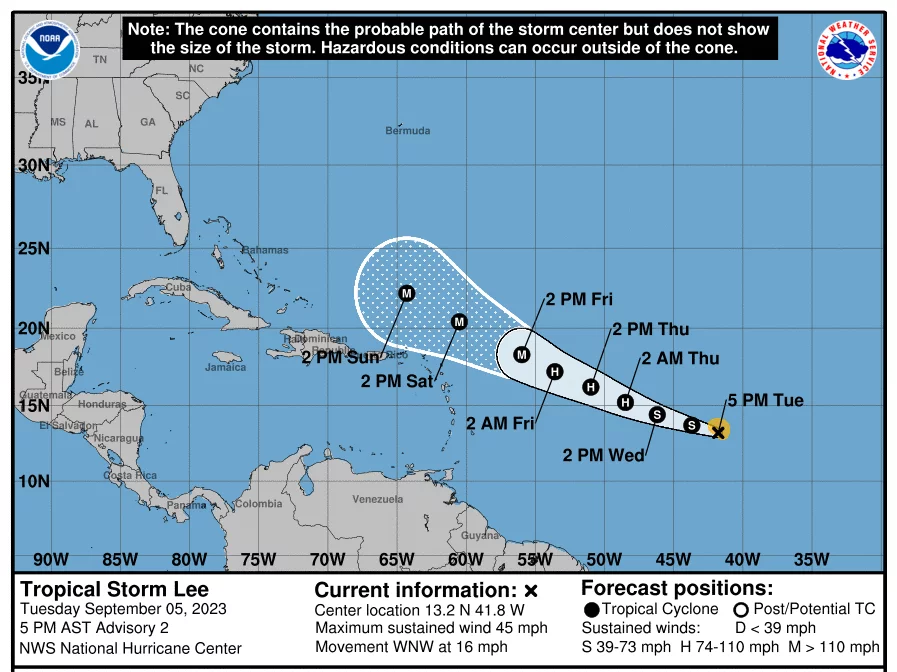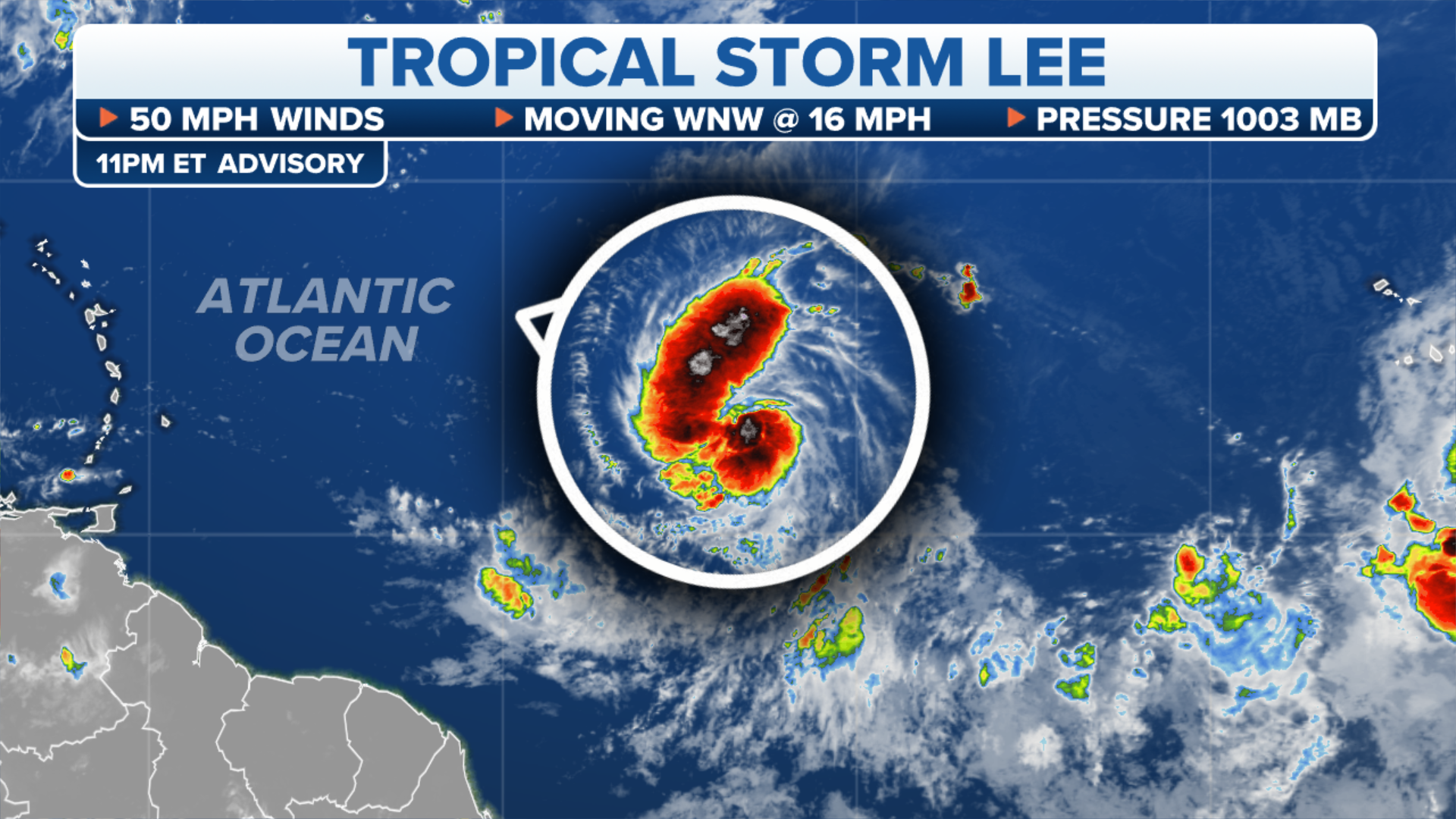“Atlantic Heating Up: Looming Danger as Tropical Storm Lee Gains Strength”
The Atlantic Ocean is currently brewing a potential catastrophe as Tropical Storm Lee gathers momentum, poised to transform into a highly dangerous hurricane by the end of the week. The National Hurricane Center issued this alarming forecast on Tuesday night, raising concerns about the looming threat.
Formation and Progress:
Tropical Storm Lee originated between Western Africa and the Windward Islands. As of Tuesday night, it was steadily moving west-northwest at a speed of 16 miles per hour, positioned approximately 1,230 miles east of the Lesser Antilles. Lee was packing sustained winds of up to 50 miles per hour.

The National Hurricane Center warns that Lee could intensify rapidly into an extremely hazardous hurricane by the weekend, potentially reaching major hurricane status by Wednesday night or Thursday. According to the National Weather Service, a tropical storm is defined by sustained winds between 39 and 73 miles per hour, while a hurricane boasts winds of 74 miles per hour or higher. Lee’s arrival comes just days after Hurricane Ida wreaked havoc in the Southeastern United States.
Impact and Economic Consequences:
Hurricane Ida, which made landfall in Florida before moving northeastward, caused widespread destruction and power outages. It subsequently clashed with Georgia, inundated several coastal areas in South Carolina, and flooded the streets of Charleston. This destructive storm claimed at least two lives, one in Florida and another in Georgia.
Economically, experts estimate that Ida’s impact and associated losses could range between $12 billion and $20 billion. Now, Lee is on the verge of becoming a significant hurricane, with winds of 145 miles per hour or more.
Unusual Intensity:

Lee’s rapid strengthening is unusual for this time of year in the Atlantic. Forecasters attribute this unusual intensity to above-average sea surface temperatures in the region where the storm is forming, specifically in the vicinity of the Lesser Antilles.
The path of the storm remains uncertain, though most models predict a northward turn, steering clear of the Caribbean and staying off the U.S. East Coast. However, it’s essential to remember that weather models, while generally reliable, are not infallible. The 2017 Hurricane Irma was projected to follow a similar trajectory but ultimately devastated Florida’s Gulf Coast instead.
Conclusion:
As Tropical Storm Lee gathers strength in the Atlantic, the world watches and waits. With the potential for rapid intensification and major hurricane status looming, it’s crucial to monitor official forecasts and heed any evacuation orders or safety recommendations issued by local authorities. The Atlantic hurricane season is a reminder of nature’s power, and preparedness is our best defense against its unpredictable forces. Stay safe, stay informed, and be ready to act if necessary.




